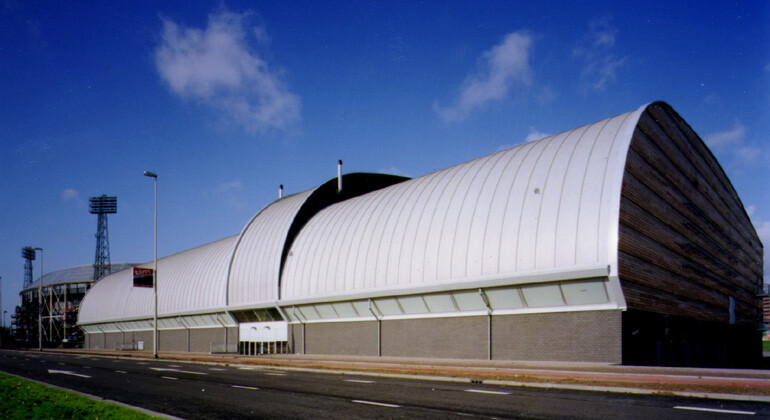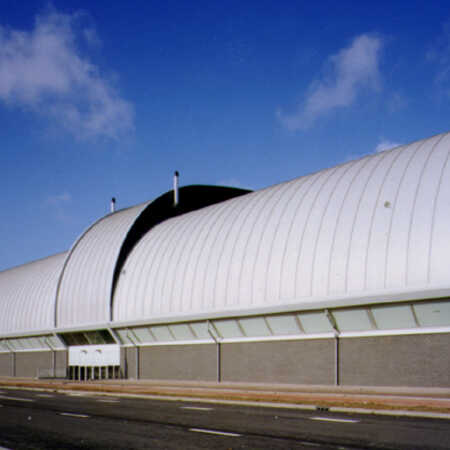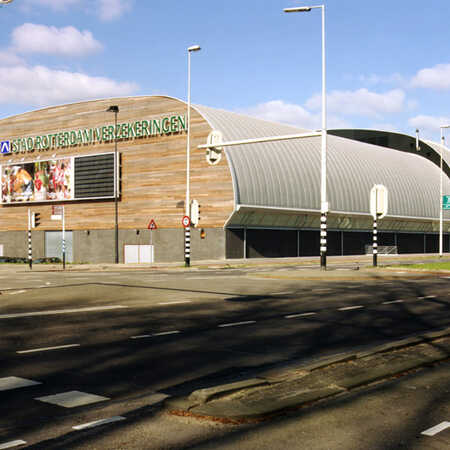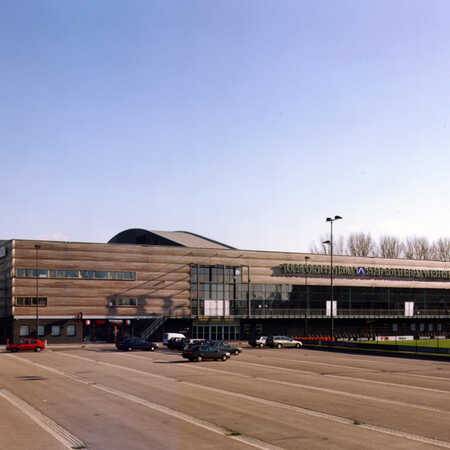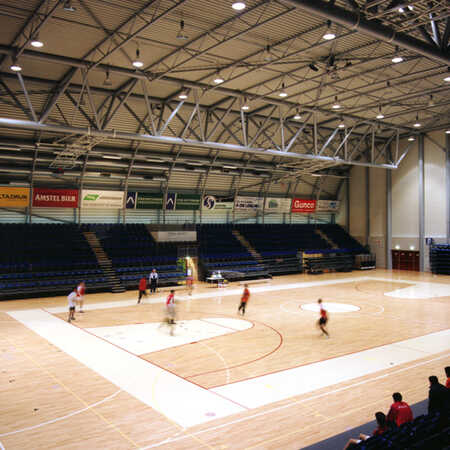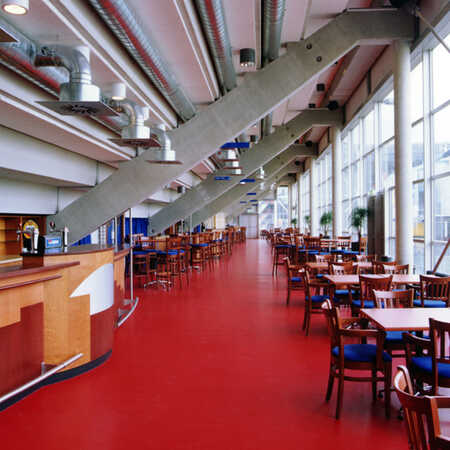0135
A compact sports building
Everyone agreed this was the best location for a sports building to house the teams that played basketball and volleyball at the highest level in the Rotterdam area: right next to the Feijenoord football stadium, De Kuip. Additionally, there was a serious demand for sports facilities for local schools, and this combination resulted in a commission for the architectural studio ZJA to design a sports building. The official opening took place in 2000.
What immediately strikes the observer is that the building presents itself as a coherent gesture. There is no jumble of dressing rooms, offices and cafeteria stuck onto the hall itself, but one building with a playfully arched roof, a rough wooden facade and an obvious glass entrance right in the middle. Inside, one finds the building divided in two halves. One houses a smaller sports hall for physical education, on the first floor. The dressing rooms are located right under it. Out front at ground level, the fan shop for Feijenoord supporters had its home for years. In those days fans bought shirts with the names of Robin van Persie and Pierre van Hooijdonk.
In the centre of the building are the staircases and the spaces with technical installations. On the second floor we find a club cafeteria as well, with a view on the court of the big hall. The curved line in the roof of that section echo’s the main roof while breaking up the visual impression of the volume. On the other side the big and high hall accommodates the top teams. It has a cafeteria on the first floor behind a glass facade. The wall of the hall is closed preventing daylight to disturb the players.
The small pitch for football training that used to be in front of the hall is replaced by a parking lot, but at the time of the opening visitors could watch the Feijenoord top team training from the cafeteria and the terrace.
Transparent and flexible
This sports hall was to be built with a limited budget, making the choice for a compact design quite logical, in order to save surface and materials. Architecturally the design is plain while making a playful and generous gesture with the curved roof that is completely integrated with the facade at the side of the dike. The chosen look is robust and honest, slim and elegant where possible. The leading motive is transparency. Technical details, installations and piping, nothing is covered up. The beams and trusses, their constituent materials, all is visible. In order to allow for maximum daylight in the cafeteria the outside walls are replaced by steel cross bars behind the glass facade. The other half of the facade is covered with plain wood with a transparent protective layer. Overall the style is straightforward and without frills.
No costs were spared for the high-quality wooden floor of the court in the main hall. Much attention was paid to the installation of flexible systems to enable different use of the space and to adapt the size and placement of the stands. Gymnastics events draw smaller crowds than indoor football or handball matches. The biggest crowds attend volleyball, basketball and tennis matches.
Quite soon after the opening of the hall it became obvious the city of Rotterdam needed more sports facilities. ZJA also designed the big sports centre that was built right next door and connected to the first sports hall. The extension opened in 2010.
Architect: ZJA
Client: HBM, Zijderveld, Lakerveld
Year: 1999
Project: #135
Related
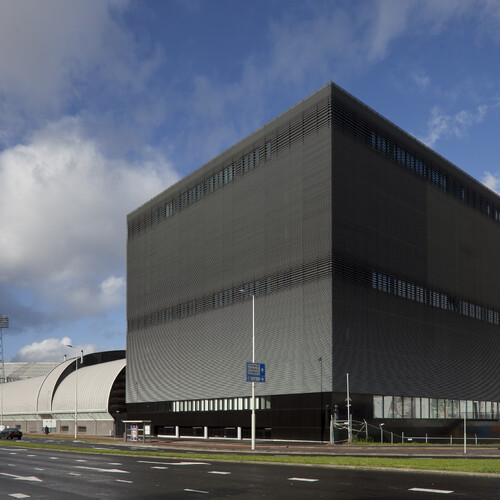
Extension Top sports centre, Rotterdam
Sports Centre, Rotterdam
For decades the area around De Kuip, the home of Feijenoord football club, on the south side of Rotterdam, is where local sports facilities…

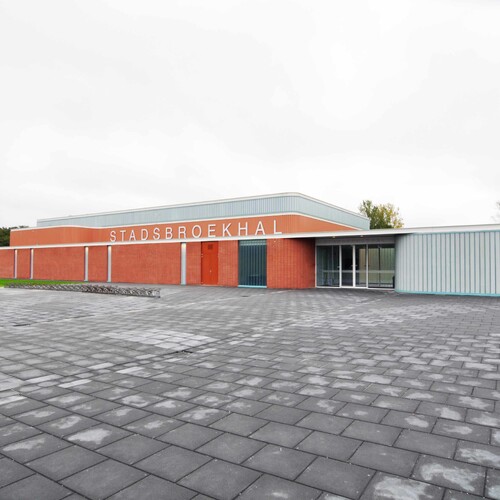
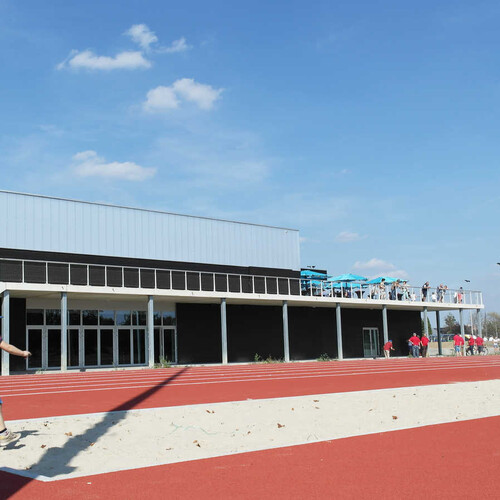
Sports park Sneppenbos, Boechout
The town of Boechout is situated in the suburban area east of Antwerp. There, bordering on a nature reserve, lays Sportspark Sneppenbos
